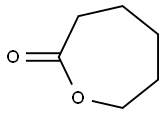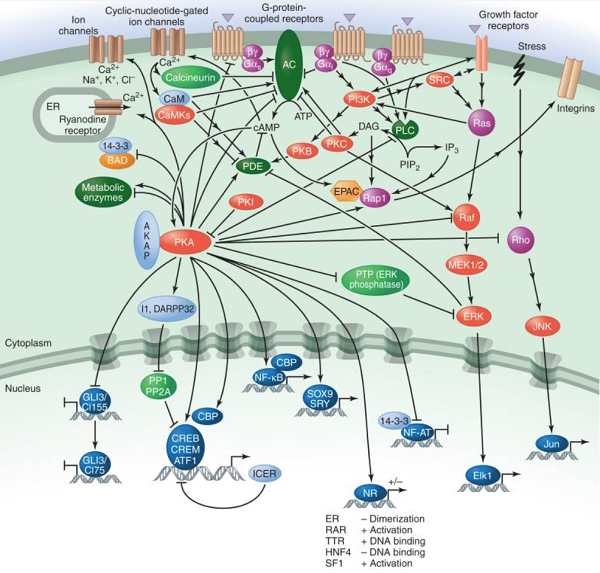Polycaprolactone: Mechanical Properties and Biomedical Applications
General Description
Polycaprolactone is a versatile biomaterial recognized for its mechanical robustness, including significant tensile strength and Young's modulus, making it suitable for various biomedical applications, particularly in cardiac scaffolds. Its biodegradability allows for integration into myocardial tissues, minimizing foreign body reactions and supporting tissue maturation. Surface modifications enhance cell adhesion and proliferation, while blending with conductive polymers promotes alignment and maturity of cardiac myocytes. Despite initial mechanical challenges, ongoing research is focused on optimizing polycaprolactone scaffolds to match the biomechanical environment of heart tissues, establishing its potential in cardiac tissue engineering while understanding its immune response and degradation impacts.

Figure 1. Polycaprolactone
Mechanical Properties
Mechanical Strength and Elasticity
Polycaprolactone is recognized for its mechanical robustness, which includes significant tensile strength ranging from 25 to 43 MPa, alongside a Young’s modulus between 330 and 360 MPa. These mechanical properties make polycaprolactone a prime candidate for various applications, particularly in bone tissue engineering where high stiffness is essential. While at first glance, the high Young’s modulus of polycaprolactone might suggest that it is unsuitable for soft tissues, such as the myocardium, recent advancements have demonstrated its potential in cardiac applications. As engineering strategies evolve, polycaprolactone scaffolds are increasingly designed to match the biomechanical environment of heart tissues, presenting a compelling option for cardiac applications despite its initial mechanical challenges. 1
Degradation and Its Impact on Mechanical Properties
The mechanical properties of polycaprolactone also evolve over time due to its biodegradable nature. Although the complete degradation of polycaprolactone may take two to three years, significant changes in its mechanical properties can occur within the first few months. Research indicates a dramatic loss of Young’s modulus, with decreases of 40% and 60% reported after two and four months respectively due to hydrolytic degradation. However, the timeline of degradation and the accompanying changes in mechanical properties can vary. For instance, a study employing accelerated degradation methods showed that while polycaprolactone experienced mass loss, its mechanical properties remained largely stable over seven days. Continued research is needed to fully understand the stability of polycaprolactone scaffolds in vivo and to quantify the correlation between degradation and mechanical performance in real-world applications. 1
Biomedical Applications
Cardiac Scaffolds
Polycaprolactone has emerged as a significant material in the field of biomedical applications, particularly for cardiac scaffolds. The successful integration of polycaprolactone scaffolds into cardiac tissues heavily relies on factors influencing cell adhesion and proliferation. Modifications to the surface of polycaprolactone can enhance these biological interactions. Techniques such as chemically fusing polypeptide chains or growth factors like vascular endothelial growth factor onto the polycaprolactone surface significantly improve cell adhesion. Additionally, methods that involve blending polycaprolactone with other polymers or treating it with porogenic salts to increase surface roughness have demonstrated enhanced cell interaction. Furthermore, scaffolds coated with protein solutions containing collagen and laminin show increased myocardial cell viability, providing a conducive environment for heart tissue engineering. 2
Enhancing Myocardial Cell Maturation
For a scaffold to be effective in myocardial applications, it must promote alignment, maturation, and functionality of cardiac myocytes. Recent studies indicate that by blending polycaprolactone with aligned conductive polymers, electrical anisotropy can be engineered to enhance the signaling and metabolic activity of induced pluripotent stem cell-derived cardiac myocytes. Research has shown that polycaprolactone scaffolds can also exhibit mechanical anisotropy, which significantly influences cardiac myocyte behavior. For instance, studies demonstrated that electrospun polycaprolactone microfibers allowed for greater alignment of cardiac myocytes along the fibers, resulting in enhanced expression of maturity markers and improved contractility. This ability to support and enhance cardiac myocyte function exemplifies polycaprolactone's potential in tissue engineering applications for the heart. 2
Immune Response and Biodegradability
One of the defining properties of polycaprolactone in biomedical applications is its biodegradability and low immunogenicity. When a polycaprolactone scaffold is implanted in the heart, it can integrate into the myocardium, significantly reducing the risk of foreign body reactions as it degrades. This slow degradation allows polycaprolactone to provide mechanical support during the tissue integration process, promoting the development of mature and contractile cardiac tissue over time. Understanding the immune response is critical, as the foreign material triggers an initial reaction that can lead to various outcomes, including encapsulation or inflammation. Ideally, polycaprolactone promotes healing responses that favor integration rather than chronic inflammation. The capacity of polycaprolactone to minimize adverse immune reactions while providing structural integrity makes it an attractive candidate for advancing cardiac tissue engineering. 2
References:
[1] PHILLIP R. SCHMITT K D D, KAREEN L. K. COULOMBE*. Current Applications of Polycaprolactone as a Scaffold Material for Heart Regeneration[J]. ACS Applied Bio Materials, 2022, 5 6: 2431-3126. DOI:10.1021/acsabm.2c00174.You may like
See also
Lastest Price from Polycaprolactone manufacturers

US $0.00-0.00/KG2025-04-15
- CAS:
- 24980-41-4
- Min. Order:
- 50KG
- Purity:
- 99%
- Supply Ability:
- 500000kg

US $10.00/kg2025-04-15
- CAS:
- 24980-41-4
- Min. Order:
- 1kg
- Purity:
- 99%
- Supply Ability:
- 5000


